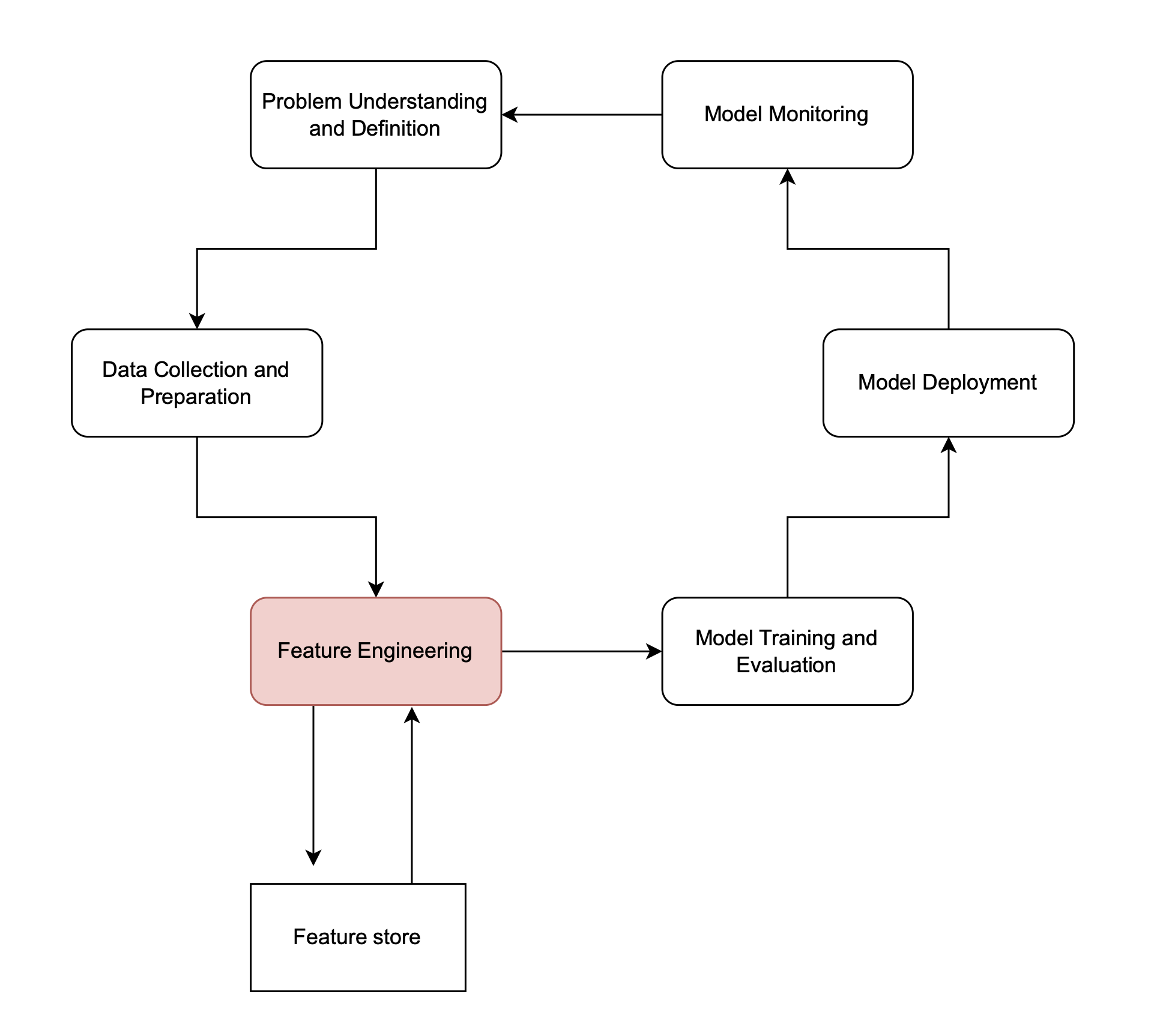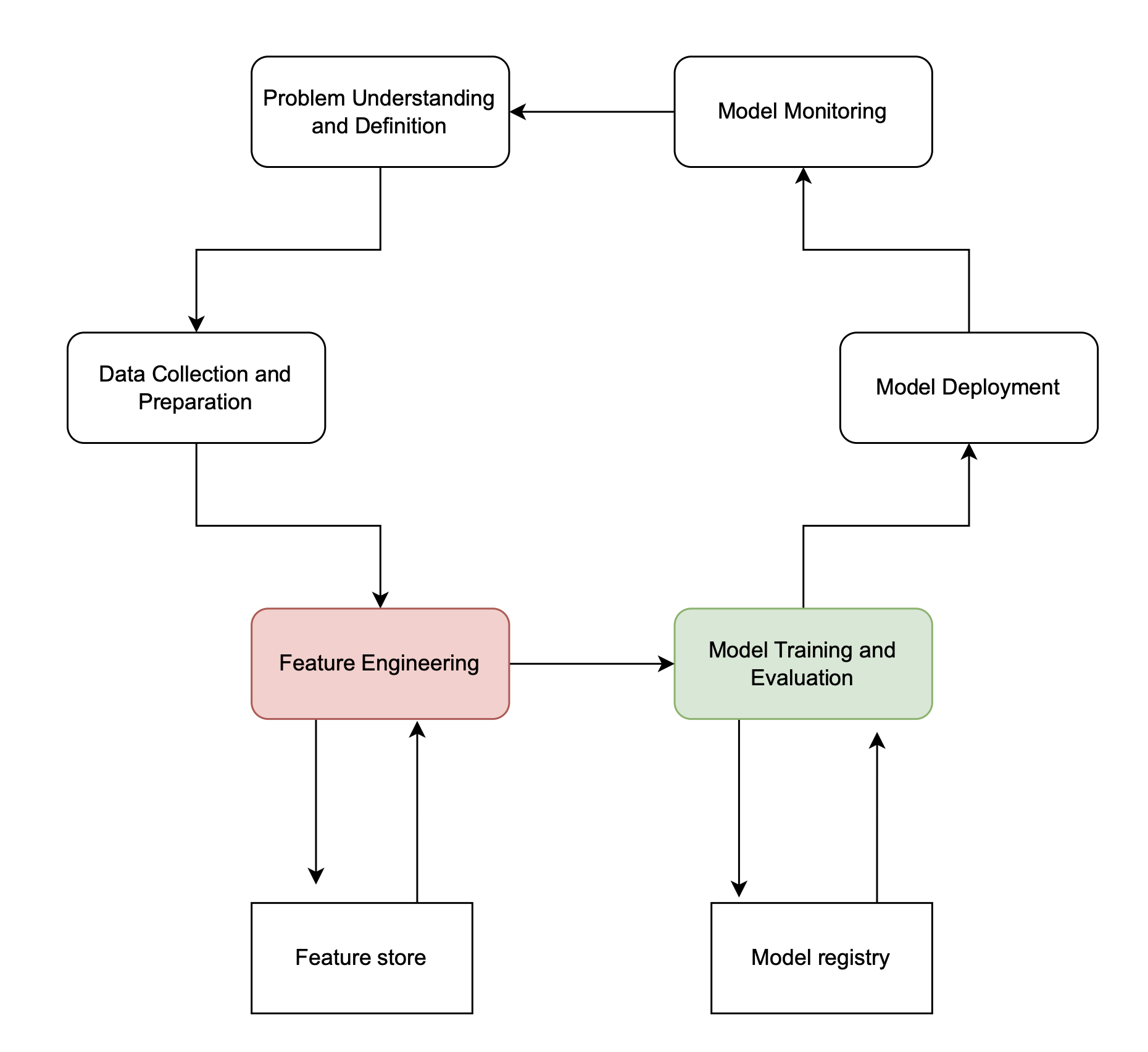Architectural components in end-to-end machine learning frameworks
End-to-End Machine Learning

Joshua Stapleton
Machine Learning Engineer
Feature stores
Features
- Feature selection
- Feature engineering
Feature store
- Central repository for features
- Ensures consistency, reduces duplication
- Enables sharing, discovery
- Standardizes feature transformations and calculations

Feast
- Popular tool for implementation of feature stores
- Provides unified management, storage, serving, and discovery for ML features
Principles
- Define, register features with feature sets
- Feature sets: grouping of related features + metadata
Example: heart disease features
- Patient entity
- Associated features (cholesterol, age, sex)
Feast feature stores part 1
from feast import Field, Entity, ValueType, FeatureStore from feast.data_source import FileSource# Define the entity, which in this case is a patient, and features patient = Entity(name="patient", join_keys=["patient_id"])chol = Field(name="chol", dtype=Float32) age = Field(name="age", dtype=Int32) ...# Define the data source data_source = FileSource( path="/path_to_heart_disease_dataset.csv", event_timestamp_column="event_timestamp", created_timestamp_column="created")
Feast feature stores part 2
# ... continued # Create a feature view of the data heart_disease_fv = FeatureView(name="heart_disease", entities=[patient], schema=[cholesterol, ...], ttl=timedelta(days=1), input=data_source,)# Create a FeatureStore object store = FeatureStore(repo_path=".")# Register the FeatureView store.apply([patient, heart_disease_fv])
Model registries
Model registry
- Version control systems
- Keep track of different versions of model
- Annotate models
- Track performance over time
Benefits
- Organization
- Transparency
- Reproducibility

Let's practice!
End-to-End Machine Learning

